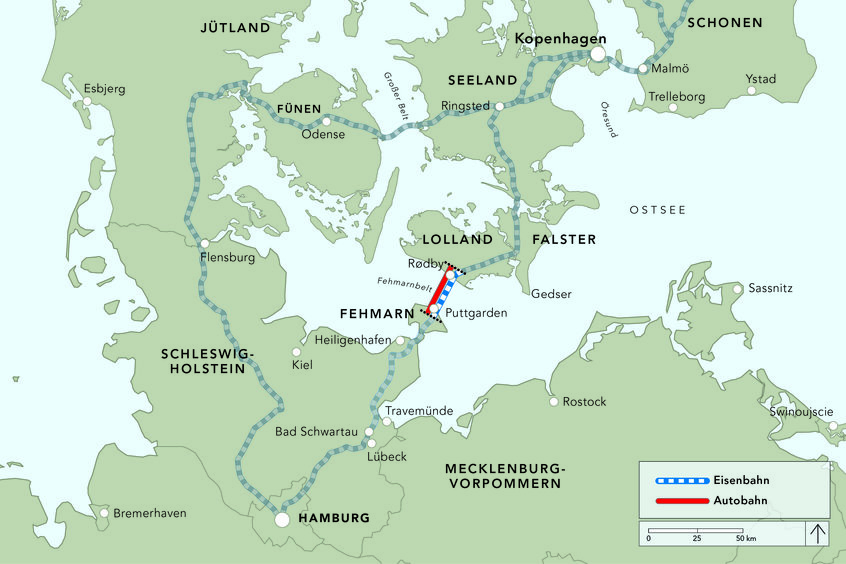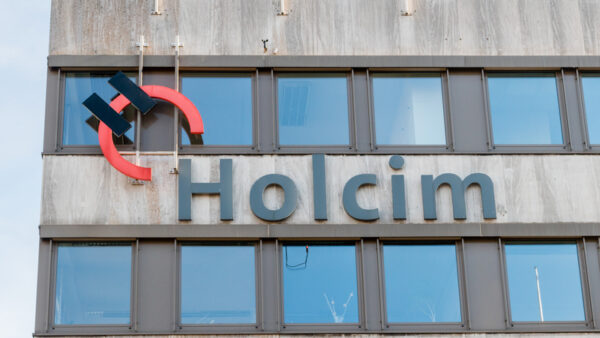The European Commission has found that the €7.4bn Fehmarn Belt, part of which will run underneath the sea between Denmark and Germany, has not broken the EU’s state aid rules.
The project includes an undersea tunnel between Rødby on the Danish island of Lolland and Puttgarden in Germany. The tunnel will be around 19km long and consist of an electrified, double-track railway and a four-lane motorway.
The commission found that multiple loans and aid given to Femern, the consortium behind the development, can be listed as state aid under EU rules.
Changes made to the project include a maximum €9.3bn amount of state debt in the first 16 years of operation.
Denmark will be the sole owner and financier of the tunnel and its transport connections.
The development’s public financing model was originally approved in July 2015, but came under scrutiny in December 2018 after complaints from ferry firms Scandlines and Stena Line.

The route of the Fehmarn Belt (Femern A/S)
Margrethe Vestager, the commissioner for competition, said: “The Fehmarn Belt fixed link will contribute to the cross-border integration of the two regions it will connect. It will be key to complete the main north-south route connecting central Europe and the Nordic countries to the benefit of the European economy.
“Following an in-depth investigation, we concluded that the Danish measures to support this project of common European interest are in line with EU State aid rules, as the positive effects of the project clearly outweigh any potential distortion of competition.”
The Fehmarn Belt is due to be completed in 2028.
In February 2020 SNC-Lavalin subsidiary Atkins won an eight year consultant contract on the project.
The project was green-lit in March 2019, had a €200m loan from the European Investment Bank announced in May, and was investigated by the European Commission in June.
Top image: A rendering of the tunnel entrance (Femern A/S)






